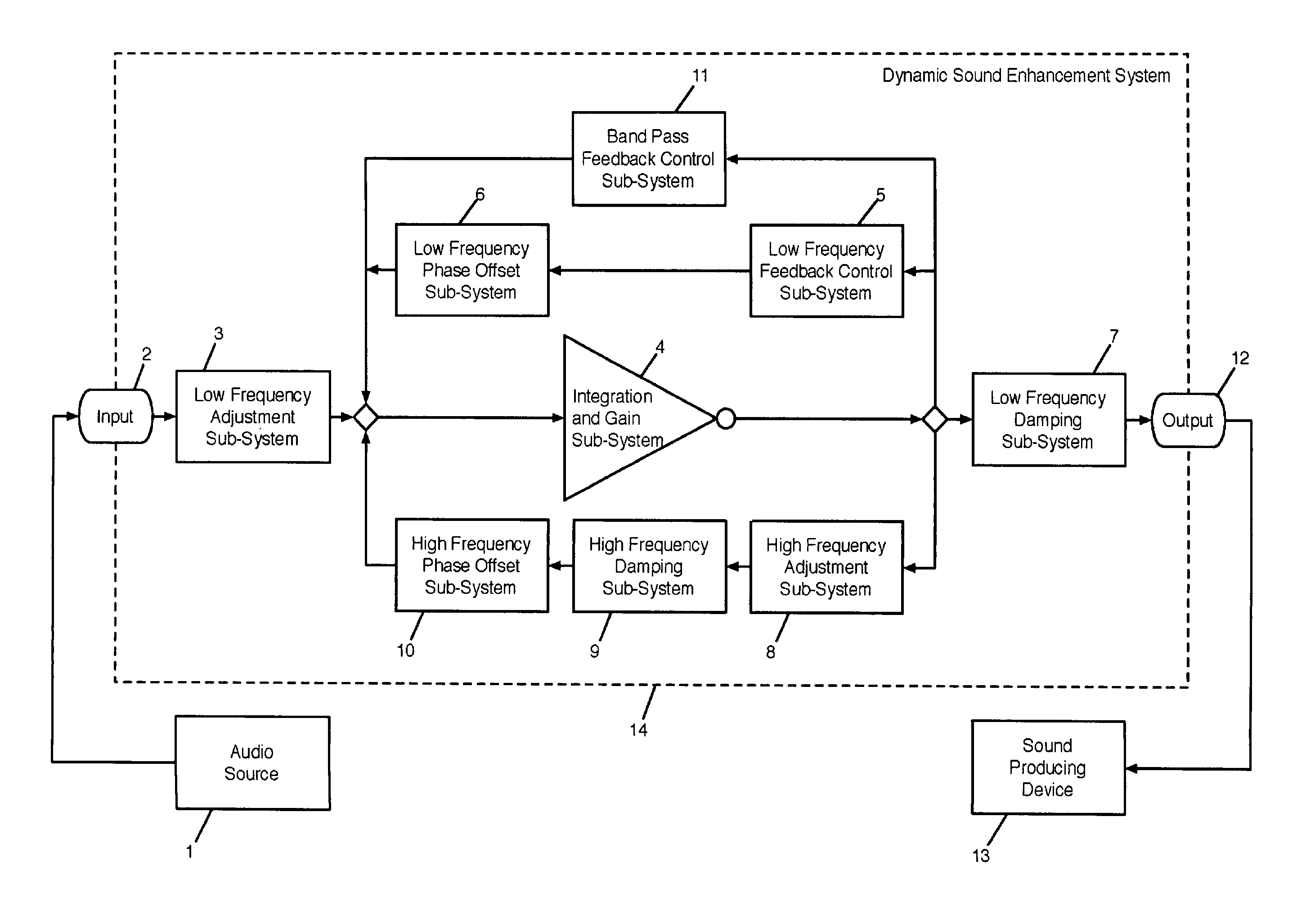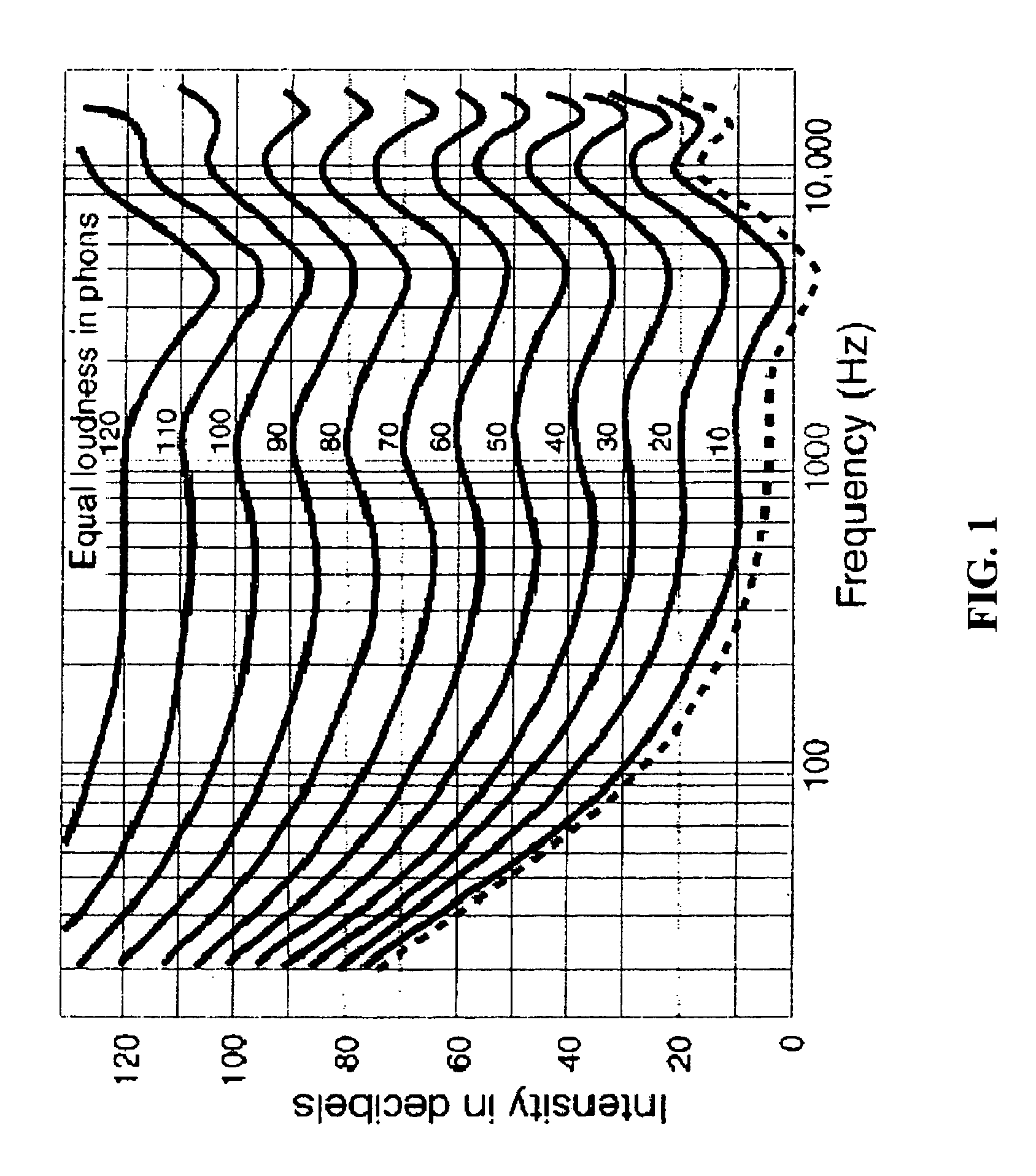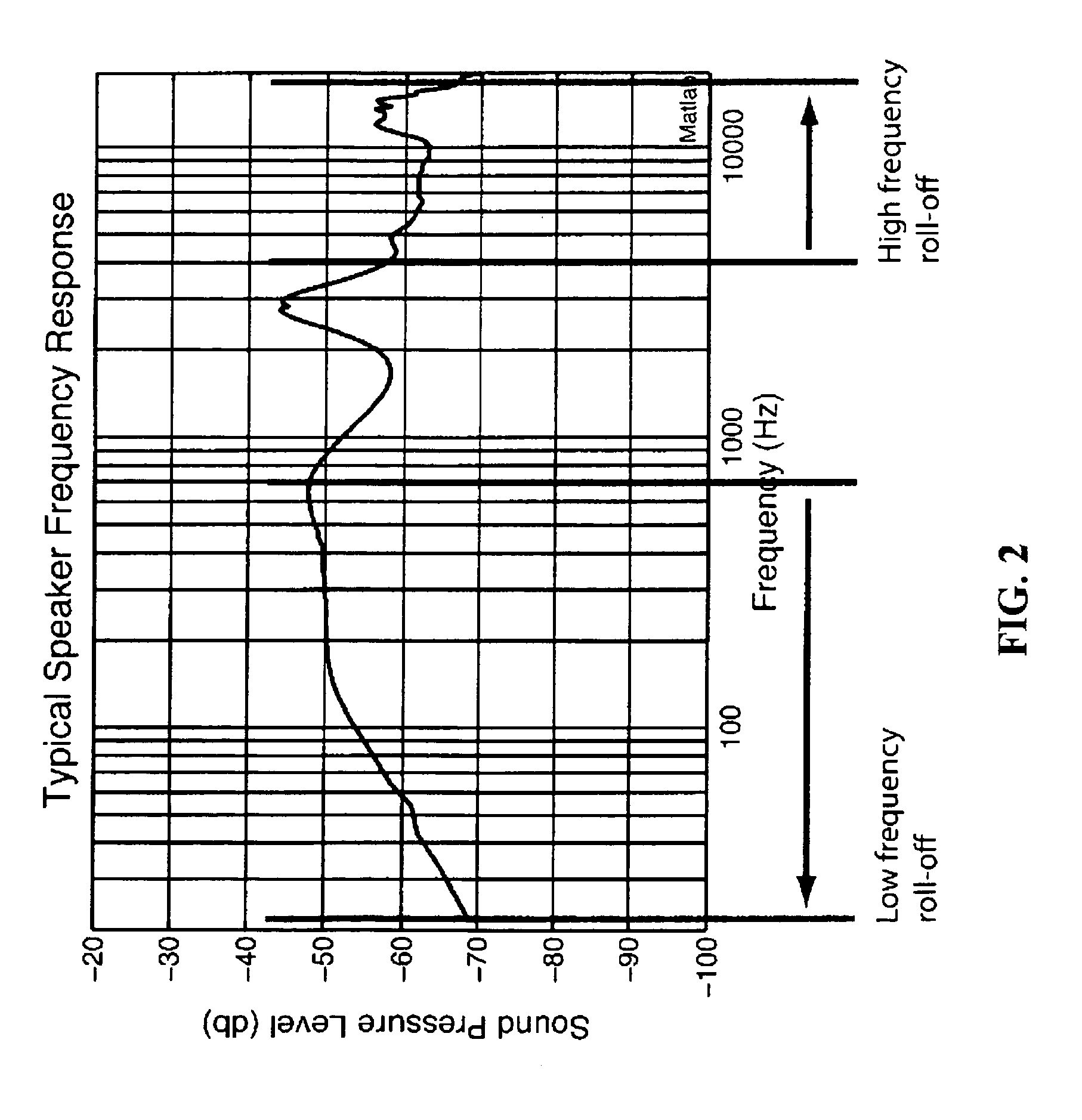Dynamic contoured-sound/subwoofer-synthesis audio system
a subwoofer and contoured sound technology, applied in the direction of low frequency amplifiers, electrical transducers, transducer casings/cabinets/supports, etc., can solve the problems of reduced human ear audibility, and reduced loudness, so as to counterbalance the natural inadequacies of human ear, significantly compensate the ear's ability to perceive low and high frequency sounds, and add loudness
- Summary
- Abstract
- Description
- Claims
- Application Information
AI Technical Summary
Benefits of technology
Problems solved by technology
Method used
Image
Examples
Embodiment Construction
[0048]Turning now to FIG. 3, a block diagram representation is illustrated of one embodiment of a dynamic sound enhancement system, designated 14, in accordance with the present invention. Sound system 14 receives an audio signal from an audio source 1 at an input terminal 2 which conveys the audio signal to a low frequency adjustment sub-system 3. The low frequency adjustment sub-system 3 provides a variety of low frequency responses in response to adjustments of an adjustable element. The adjustable element is constructed with a plurality of step settings and each setting produces a different low frequency response at its output.
[0049]An integration and gain control sub-system 4 integrates feedback signals from the low frequency phase offset sub-system 6, the band pass feedback control sub-system 11, and the high frequency phase offset sub-system 10 with arriving input signals, inverts the resulting composite signal polarity, adjusts the magnitude of the composite signal, and conv...
PUM
 Login to View More
Login to View More Abstract
Description
Claims
Application Information
 Login to View More
Login to View More - R&D
- Intellectual Property
- Life Sciences
- Materials
- Tech Scout
- Unparalleled Data Quality
- Higher Quality Content
- 60% Fewer Hallucinations
Browse by: Latest US Patents, China's latest patents, Technical Efficacy Thesaurus, Application Domain, Technology Topic, Popular Technical Reports.
© 2025 PatSnap. All rights reserved.Legal|Privacy policy|Modern Slavery Act Transparency Statement|Sitemap|About US| Contact US: help@patsnap.com



